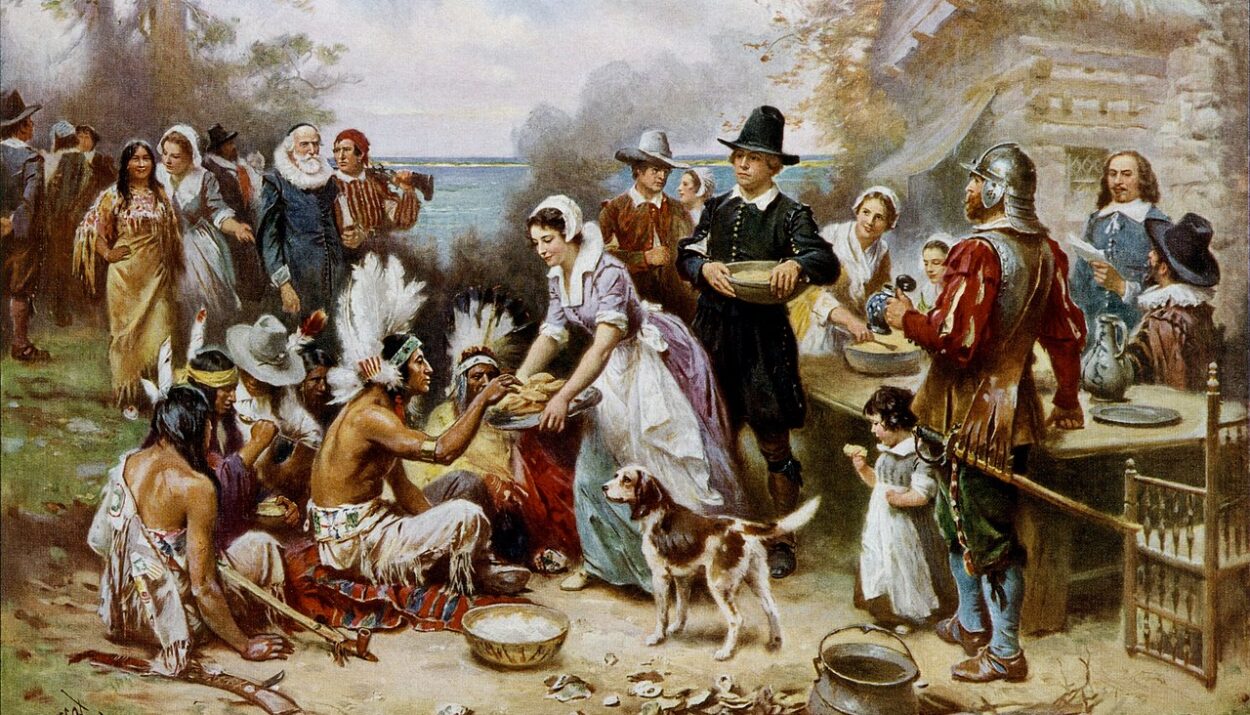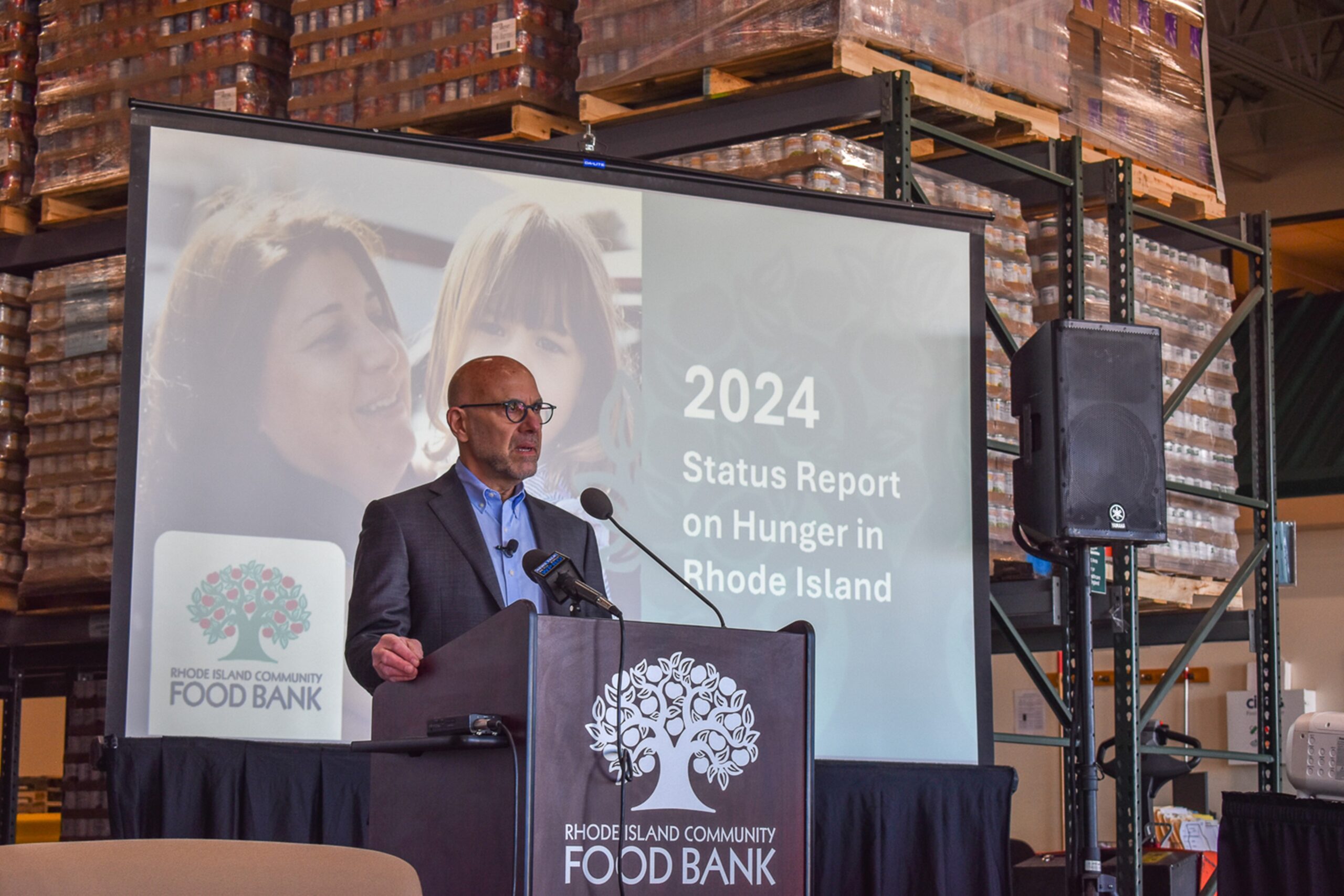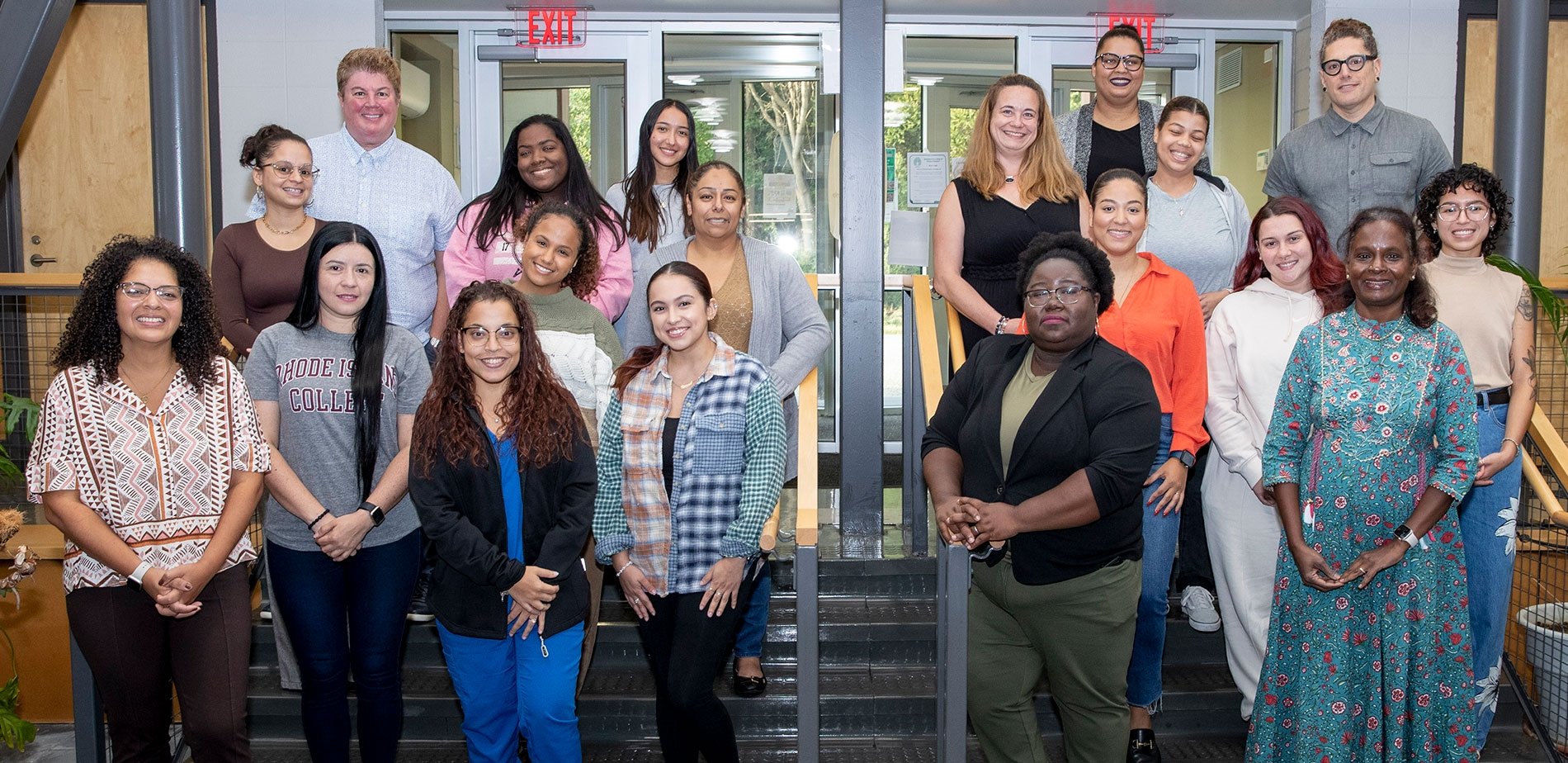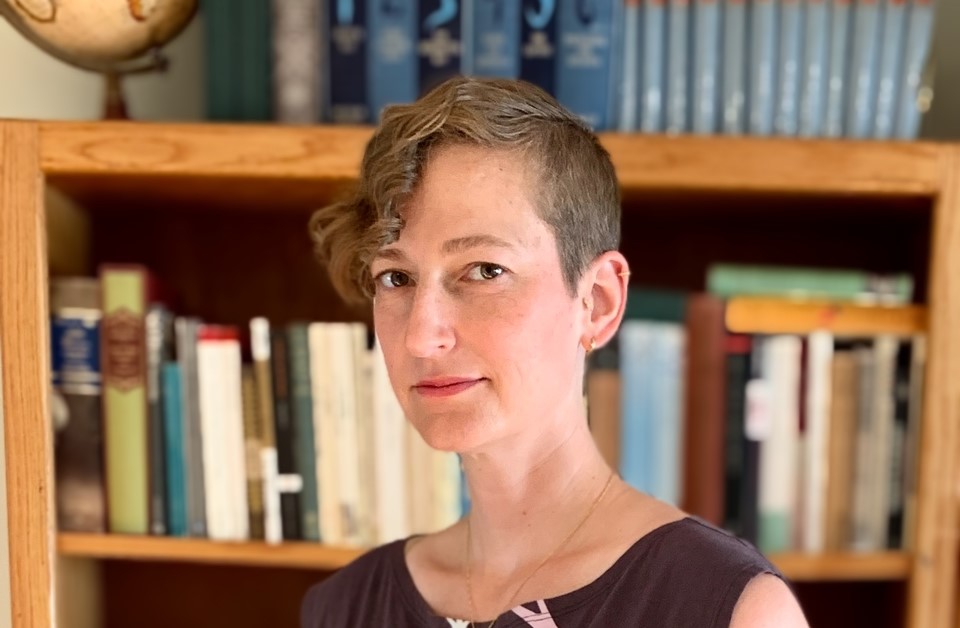“It’s not just that this is a history. It’s a legacy that we need to reckon with.”
EXETER — As families and friends gather around warmly lit tables and celebrate Thanksgiving this Thursday by sharing turkey, mashed potatoes, and gratitude, they may want to learn the history of the holiday and its consequences from the descendants of the people who were here before the Pilgrims.
Indigenous people in North America have been celebrating thanksgivings long before the first colonial encounter.
Members of the Narragansett Nation and other tribes across the country observe 13 thanksgivings throughout the year including cranberry, green bean and maple sugar, each corresponding with the first crop of the given harvest season.
Lorén Spears, executive director of the Tomaquag Museum said that these celebrations are for “giving thanks for the bounty and the gratitude to the creator for all of the gifts of the lands and waters, gifts that our ancestors and people today still show gratitude for.” She explained that they use the turtle shell as a calendar and the 13 thanksgivings correspond with squares in the center of the shell.
Spears said that the American Thanksgiving is fictional and does not align with any of their celebrated thanksgivings.
It was introduced as a national holiday in 1863 during President Abraham Lincoln’s administration and in the midst of a country at war with itself. Historian Mack Scott, a visiting assistant professor of slavery and justice at Brown University, said that in dedicating this holiday, Lincoln was reminding Americans “how to remember a time when the nation wasn’t as divided, when we were able to enjoy the fruits of what America was as an entire nation, together.”
“It was all about unison and harmony,” Scott said.
But America has been divided since its beginning. Scott pointed to the contested debates between large and small states during the Constitutional Convention and the divisive election between Thomas Jefferson and John Adams in 1796. In order to find a moment of national unity, the Lincoln administration had to go back to before America was a nation and create a fictitious narrative, Scott said.
Scott said that the myth of the first Thanksgiving is often presented as a glorious meal in which colonists and Wampanoag in Plymouth reached an agreement to help each other survive. Colonists needed help adapting to a new environment, and the Wampanoag needed help challenging a larger tribe in the area, the Narragansett.
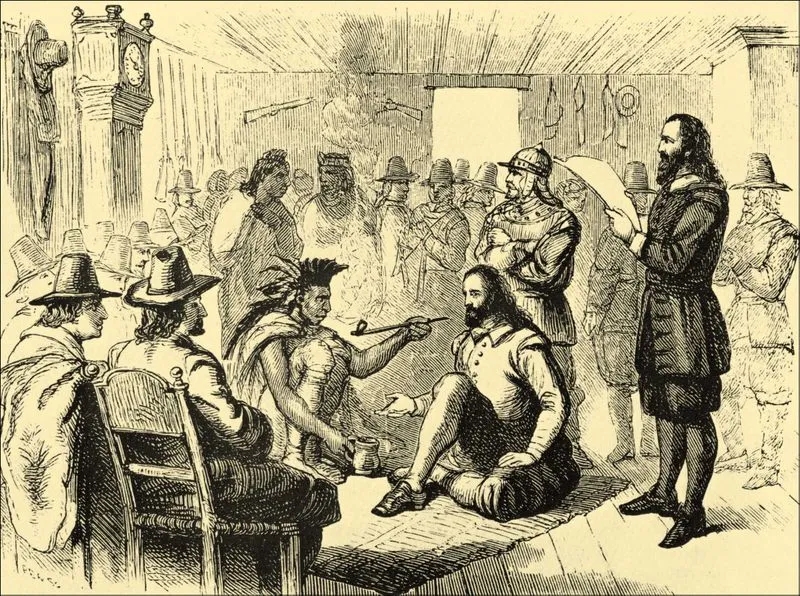
“The problem with remembering it as a meeting between equals, a meeting in which it was beneficial for both communities, is that the outcomes were drastically different for the descendants of both of those peoples,” Scott said.
The relationship quickly turned violent, with a half century of expansion, disease and exploitation. In 1675, these tensions reached a flash point, igniting what is known as King Philip’s War or the Great Narragansett War. Skirmishes and raids occurred across New England. Metacom, the son of Ousamequin– the Wampanoag sachem– was killed by colonists, and his head remained on a stake for half a century.
In the middle of this war, a colonist militia attacked the main Narragansett fort in West Kingston in what became known as the Great Swamp Fight, also called the Great Swamp Massacre. Militia members burned Native homes, and hundreds of Narragansett people were slaughtered, including women and children.
As a child, Scott, who identifies as Narragansett, canoed in the water near the Great Swamp, the site of this massacre. In his history class, Scott heard a different story about that event. He remembers it being presented as a noble fight “that won Rhode Island for the Rhode Islanders.”
“I remember asking an elder one time ‘how come they tell that story? How come our story is so different than theirs?’,” Scott said. “They would be dismissive of it and say ‘That’s white man history. They don’t know what they’re talking about. They have their own story, but we have the truth.’”
Watch a video taped at the Great Swamp Massacre memorial.
Read more about historical injustices against Southeastern New England’s Indigenous People.
Spears said that mainstream curriculum about Indigenous history, usually centered around the first Thanksgiving, does not reflect the reality of early colonial encounters.
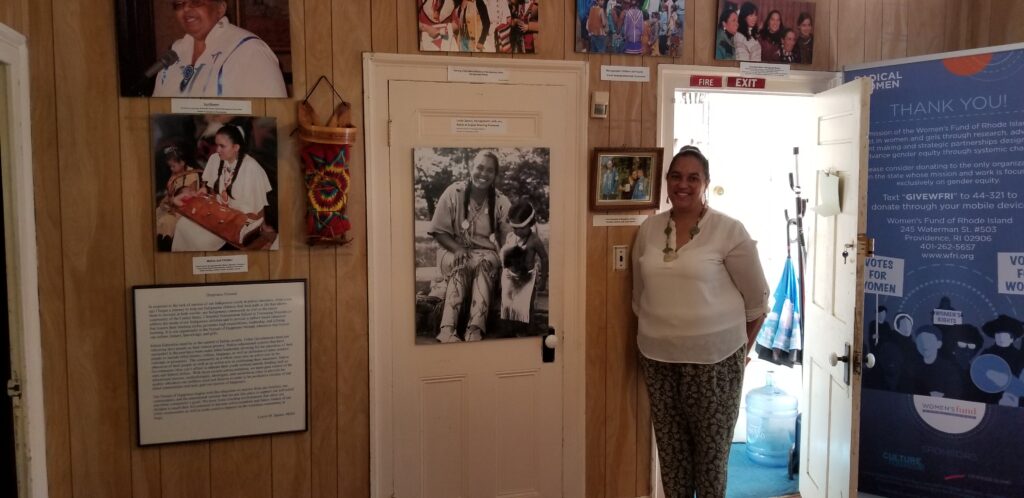
“The Americanized version of Thanksgiving is founded on genocide,” Spears said.
“Massacres of Indigenous people from then on were routinely followed by a day of thanksgiving,” she added. “And yet Thanksgiving has become this symbol of American myth of this ideology of this friendship and relationship that has been glamorized and fictionalized and turned into a cartoon.”
These myths have modern implications for Indigenous communities.
“It’s not just that this is a history,” Scott said. “It’s a legacy that we need to reckon with.”
“Because the way we have told these stories, those people have never been part of the narrative,” Scott added. “Seeing them in marginalized places and having less opportunities and resources makes sense according to the narrative that we tell.”
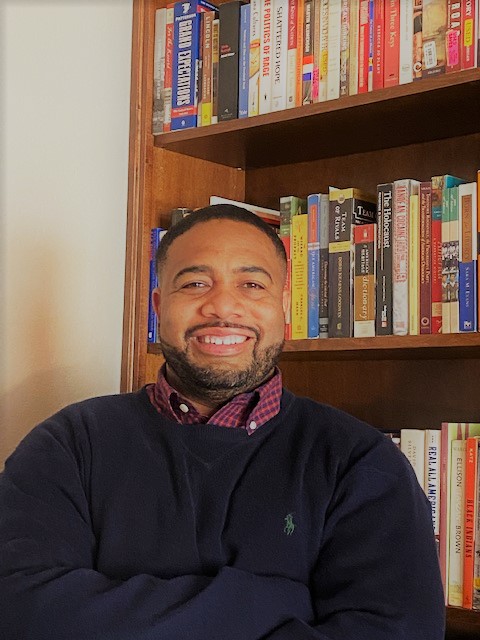
Scott said that it is not a coincidence that Native communities continue to have the least economic opportunities, the shortest life expectancy and high rates of substance abuse.
“The outcome wasn’t great for everyone,” Scott said. “For the United States to remember and give thanks for this moment, what they were also doing was celebrating and giving thanks for the systems that created the realities in which Frank James was calling out in that speech in the 1970s.”
To this, Scott refers to the protest and declaration of the first National Day of Mourning on the 350th anniversary of the Mayflower’s arrival to Plymouth. On the fourth Thursday of 1970, a group of Indigenous people gathered on a hill by the statue of Wampanoag leader Ousamequin overlooking Plymouth rock. Frank James, a leader of the Wampanoag, connected the histories of colonization, dispossession and genocide with ongoing oppression.
In his speech at the first National Day of Mourning, James said that “We, the Wampanoag, welcomed you, the white man, with open arms, little knowing that it was the beginning of the end; that before 50 years were to pass, the Wampanoag would no longer be a free people. What happened in those short 50 years? What has happened in the last 300 years?”
For many, including Scott, the day continues to be marked by remembrance.
“We’re giving thanks for the endurance and the strength and the survivance of our ancestors who had to survive these systems that were created to make sure that they were dispossessed or didn’t exist,” Scott said.
Scott’s family recognizes it as a day of mourning, but they still call it Thanksgiving. They gather to share delicious food, and Scott said he’s grateful that everyone in his family “thinks they’re the best cook ever.” He can just sit back and eat.
“We’re eating the food but we’re also eating up this knowledge about how powerful our people are and how lucky we are to be here,” Scott said.
Spears takes the day for self-care and to relax with her family.
“When you work at a Native museum, you’re spending a lot of time in the trauma of what our families and communities have historically gone through and what is still going on today,” she said. “It can wear on you as a person… After this month we’re all very, very exhausted doing the work that we do, so it’s time for a break.”
Spears and Scott encourage Rhode Islanders to engage with resources about local Indigenous communities and histories beyond Thanksgiving.
The Tomaquag Museum, which is dedicated to sharing local Indigenous history grounded in community, is open for private and group tours on Mondays, Tuesdays, Thursday, and Fridays. On Wednesdays, they are open to public drop-in visitors from 10 a.m. to 5 p.m. and on Saturday from 10 a.m. to 2 p.m. The museum has virtual options for those who can’t travel to their Exeter location including a Lunch & Learn lecture series and a book club.

Each tour is slightly different. All educators at the museum are trained in oral histories, and the guides connect their family and community stories to the archival research and belongings on display.
“It makes people understand that we’re not a vanished people,” Spears said. “We’re still here. We’re in our homeland, and we’re still practicing our cultural knowledge as we live in the 21st century.”
The Tomaquag Museum also hosts many events for the public including six or seven thanksgivings. For the most recent Cranberry Thanksgiving, the Tomaquag Museum invited Native culture bearers to share cultural knowledge including storytelling, cooking demonstrations and dancing.
“We’re a living people so we’re also always learning about ourselves through our community,” she said.
There are also a number of books about Native history written by Native people from a Native perspective that can be read year round.
For instance, Linda Coombs, an Aquinnah Wampanoag author and historian, wrote Colonization and the Wampanoag Story. Geared towards middle grades, the book not only discusses historical events, but it also traces the story of a Wampanoag family and their traditions before and during colonization.
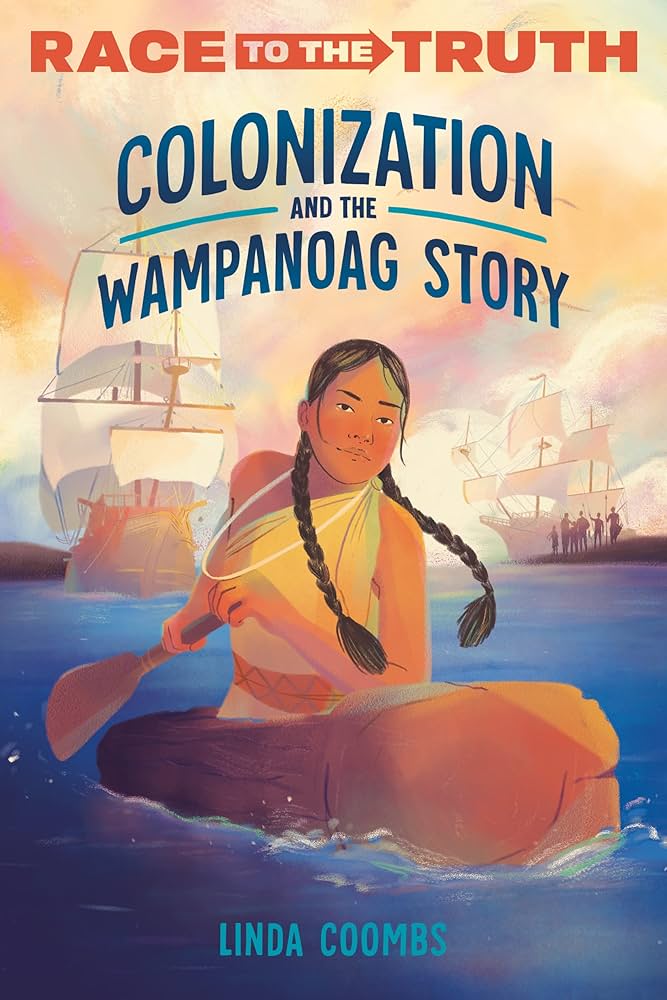
“People can better appreciate the impacts of colonization if they have some sensibility and understanding of what our tradition is like,” Coombs said.
To write it, Coombs drew upon her background working with Wampanoag histories at Plimoth Plantations and her own experiences with Wampanoag traditions. She traces the histories into the present day.
“To me, history is continual,” she said. “One thing relates to the other, it builds up the other, it affects the other. You have to have that context to understand it appropriately.”
Dana Richie is an undergraduate in the class of 2025 at Brown University concentrating in history. She currently serves as a senior staff writer for Arts and Culture and the Photo Chief for The Brown Daily Herald. She was a summer intern this year at the Portland Press Herald.
Editor’s note: Lorén Spears is a member of the Ocean State Stories Advisory Board.

